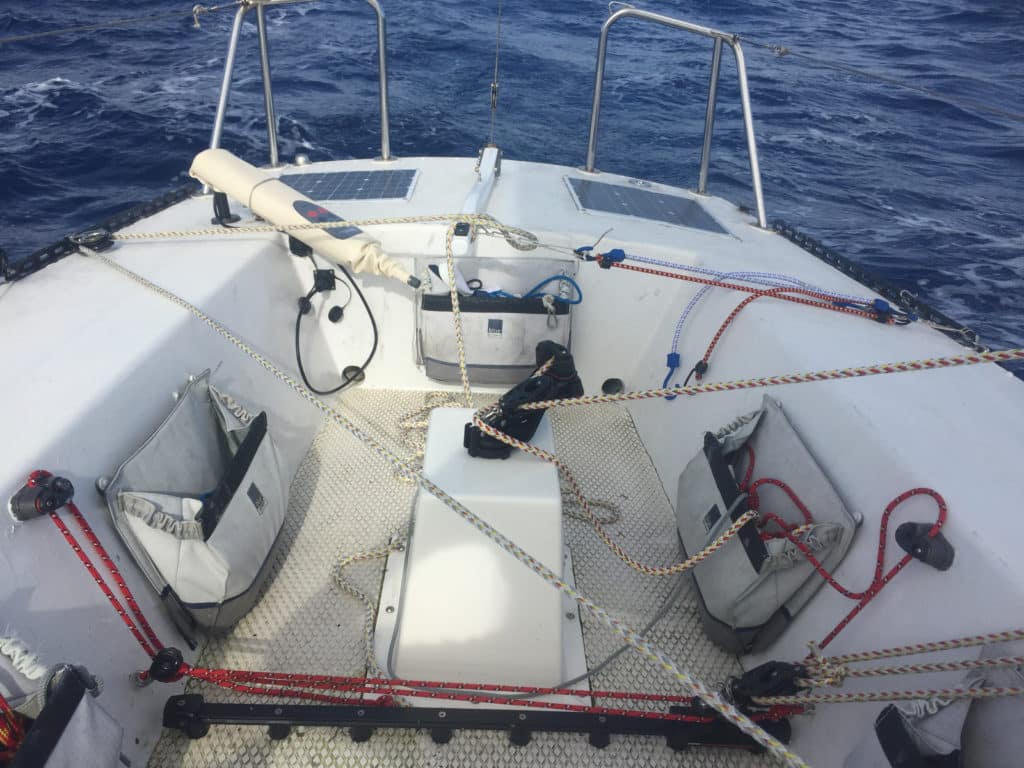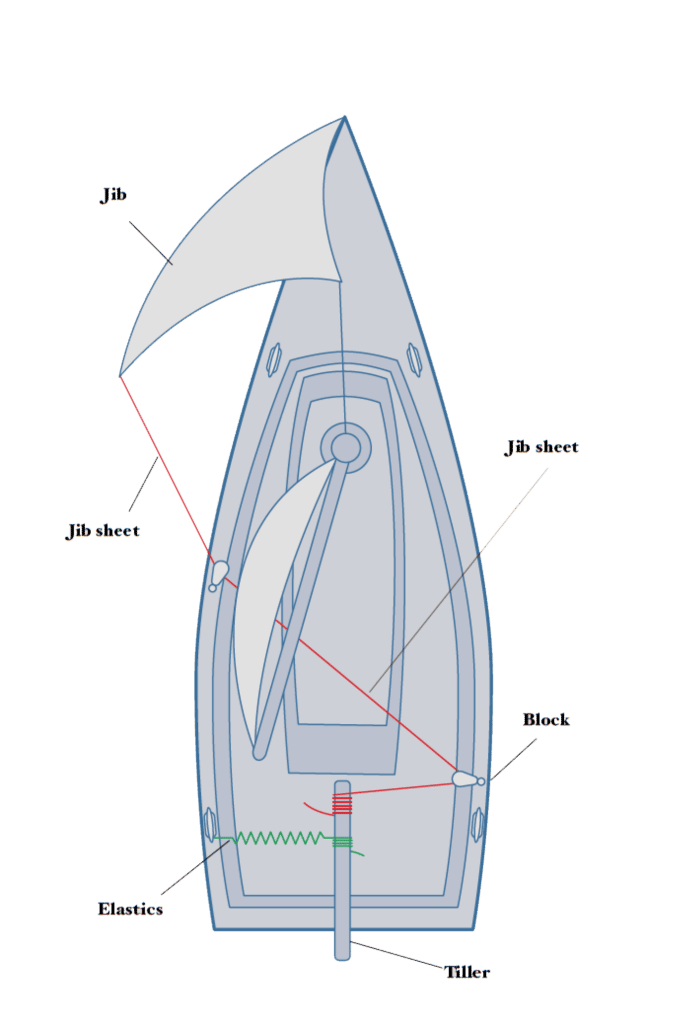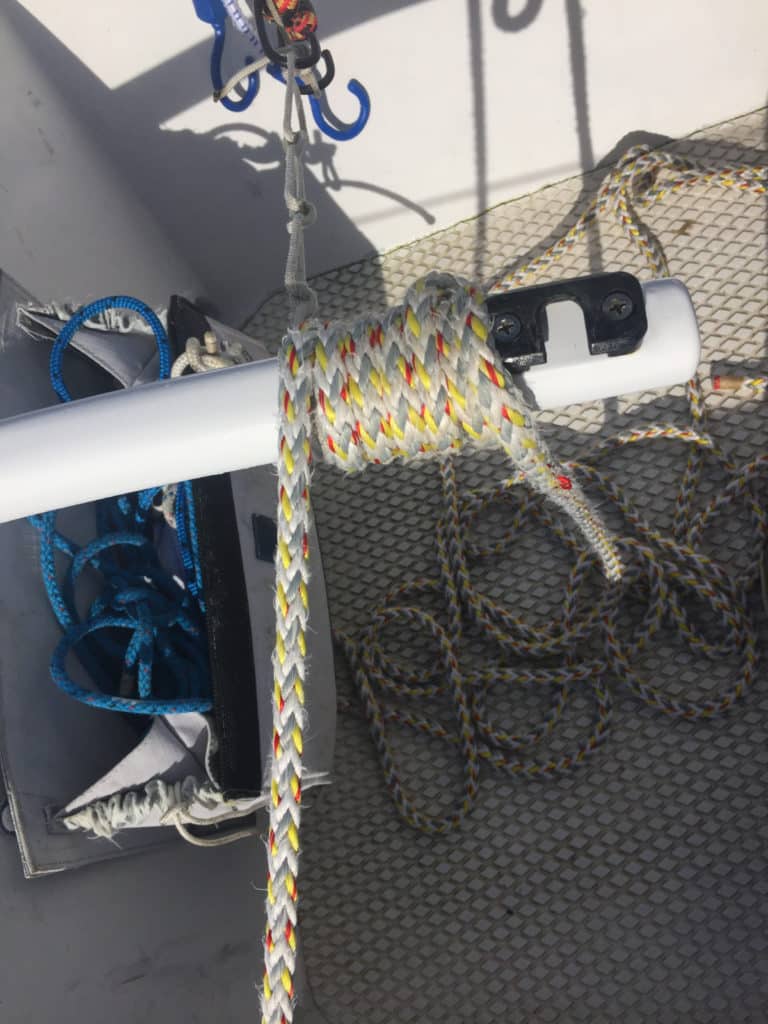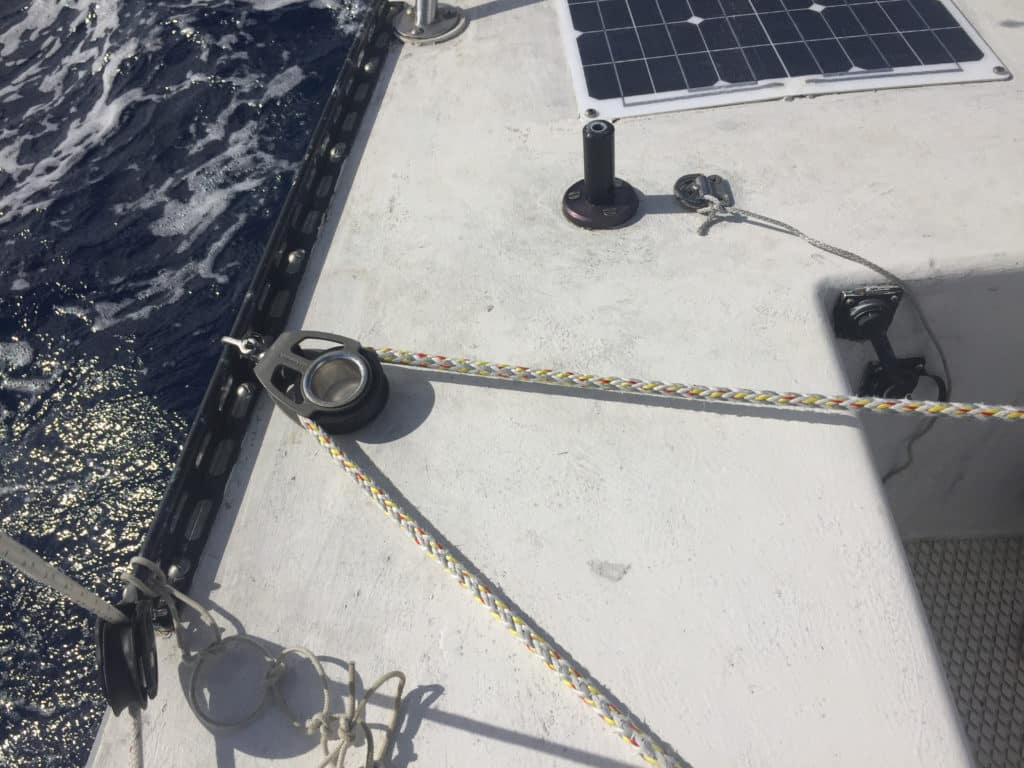
Halfway across the Tasman Sea, during a spring 2016 passage from Opua, New Zealand, to Bundaberg, Australia, aboard my Moore 24, Gannet, I observed that the ship’s batteries were running down. Initially, I attributed this to a combination of sun position, our course and the wind direction, which resulted in four of the six deck-mounted solar panels being in shade for most of the day, leaving only the two near the stern exposed to direct sunlight. Later, when I was able to test the circuit from each solar panel individually, I discovered that one of the stern panels had failed, the fourth of the six to do so since leaving San Diego two years earlier.
Whatever the cause, the consequence was that I could not continue using a tiller pilot to steer, so I did what I have done for tens of thousands of miles on other boats in the past and went to sheet-to-tiller self-steering. Of the 9,000 miles I sailed on Gannet in 2016, about 7,000 were under sheet-to-tiller.

There may be other versions of sheet-to-tiller steering, but I have always run the jib sheet to the windward side of the cockpit and then to the tiller, balanced on the leeward side with bungee cords or surgical tubing. This works from a close reach to a broad reach, and every boat I have owned could be sailed to windward just by balancing the sails and tying down the tiller.
After my Aries vane was torn apart in the Southern Ocean by the strongest wind I had ever encountered on my 37-foot cutter, Egregious, I used the storm jib set as a staysail as the steering sail. On my 18-foot open yawl, Chidiock Tichborne, I used the jib. On my 24-foot sloop, Gannet, the furling jib steers.
The necessary gear is inexpensive and probably already on most boats: a few blocks, 9 or 10 feet of roughly 1/8-inch cordage, and bungee cords of varying elasticity or surgical tubing.
I use a combination of bungee cords and surgical tubing, which can be bought from Amazon. Surgical tubing has the advantage of being infinitely adjustable, but deteriorates on long passages, presumably from exposure to sunlight, and is sometimes difficult to untie.
The first step is determining how to run the steering sail sheet to the windward side of the cockpit. Whatever sail is used, the sheet is initially trimmed through its usual leeward block, then to a block on the windward side of the cockpit beside the tiller. On flush-decked Gannet there are no obstructions. I tie the blocks to the toe rail. On other boats, one or more intervening blocks may be necessary. You want to reduce friction, so the fewer the better.

Next, cut the cordage into approximately 3-foot lengths. Take one of these and tie the middle of it to the tiller with a clove hitch. Then take the two ends and tie as many approximately 2-inch-diameter loops as you can. I use reef knots. You should end up with four or five loops.
The two remaining lengths of line are tied off to strong points near where the blocks to lead the jib sheet are. Tie a series of loops in them as well. The purpose of the loops is to provide adjustment for the bungee cords. Give yourself plenty of room when you first try sheet-to-tiller steering. Put the boat on a reach. A broad reach is probably easiest.
I have never been able to get the sheet-to-tiller arrangement to work without part of the jib and part of the mainsail set. It wouldn’t work on Chidiock Tichborne with jib and mizzen, nor on Egregious or Gannet with jib alone. So you need the jib and at least part of the main set. The jib is trimmed normally. Run the tail of the jib through the windward cockpit block. Connect two bungee cords to the leeward side of the tiller just tight enough so that when unstretched they hold the tiller a couple of inches to leeward. Uncleat the jib and remove it from the winch. This will require hand-holding the sheet briefly. You don’t want too big a steering sail. Hand-trim the sail so it is drawing properly. Wrap the sheet around the tiller three or four times and tie it off with a slippery hitch.

And then it is just about finding the right balance.
The jib will pull the bow off the wind, and the mainsail and the bungee cords are going to be pulling it up. You might need to ease or tighten the mainsheet. You might need only one bungee cord. In strong wind, you might need four. You might need to move one or more cords to loops closer to the tiller or farther away. If your steering sail is set on furling gear, you might need to reduce or increase sail area.
When you get it right, there is beauty to sheet-to-tiller, your boat moving through the water, steered silently by balanced natural forces.
Tiller pilots have their place. I use one, when any of mine are working, to sail with an asymmetrical; in extremely light wind; and when the wind is strong and aft, sailing under jib alone or bare poles. But that’s it. At practically no expense you have freed yourself from the tyranny of the tiller. And tiller pilots.
– – –
On the closing stages of his sixth circumnavigation, this one aboard his Moore 24, Gannet, Webb Chiles left the boat in Marathon, Florida, last fall and winter, where she survived Hurricane Irma. Later this year, he plans to sail Gannet *back to San Diego via the Panama Canal to complete his latest lap of the planet. *








